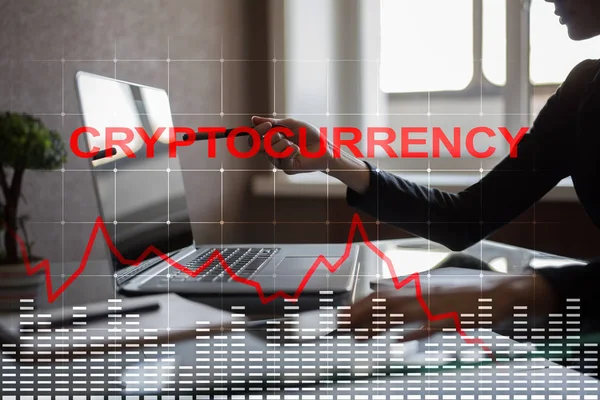In the ever-evolving landscape of finance, the emergence of cryptocurrency has marked a paradigm shift akin to the transition from barter to banknotes. Traders who have cut their teeth on traditional assets are now finding themselves at the crossroads of history, grappling with the decision to embrace or eschew the digital currency revolution. This article delves into the personal journey of a trader who has navigated the transition from traditional trading to the nuances of cryptocurrency, exploring the learning curve, the pitfalls, and the potential that this new era of finance offers.
Embracing Change: My Trading Evolution

Change is the only constant in the world of finance, and as a traditional trader, I’ve had to learn to ride the waves of market evolution. My journey into trading began with the stock market, a well-trodden path marked by its own set of challenges and rewards. As the winds shifted and whispers of a digital currency revolution grew louder, my curiosity was piqued. It wasn’t long before I realized that I was on the verge of a new financial frontier. The learning curve was daunting, but the potential for growth and the excitement of pioneering an emerging market proved irresistible. Embracing change, I took the plunge into the world of cryptocurrency, armed with the wisdom of my stock trading days.
Before Bitcoin: A Stock Trader’s Tale

Stock trading was my first love in the finance world. With a keen eye on market trends, company performance, and economic indicators, I navigated the stock exchanges and built a portfolio that was both robust and rewarding. The ecosystem of stocks and bonds was familiar territory:
- Fundamental analysis was my guide.
- Technical charts, my map.
- Quarterly reports, my compass.
Each trade was a calculated decision, influenced by the tangible metrics of the companies I invested in. The rhythm of earnings seasons and the tangible impact of world events provided a sense of stability and predictability, though the markets were always subject to the unpredictable human element of speculation and emotion.
Cryptocurrency: Decoding the Basics

The transition to cryptocurrency meant redefining my understanding of what constitutes a market and an asset. Cryptocurrency is a digital or virtual currency that uses cryptography for security and operates independently of a central bank. The basics of cryptocurrency are underpinned by blockchain technology – a decentralized ledger that records all transactions across a network of computers.
The key components include:
- Blockchain: The immutable digital ledger.
- Tokens: Units of value (e.g., Bitcoin, Ethereum).
- Wallets: Digital storage for cryptocurrencies.
- Exchanges: Platforms for buying, selling, and trading.
Unlike stocks, cryptocurrencies are not tied to a company’s performance but are driven by different factors such as technological advancements, market sentiment, and regulatory news. This novel market demanded a fresh approach to trading, one that embraced volatility and innovation.
The Shift: Navigating New Markets

The transition from stock trading to cryptocurrency was not merely a shift in asset class but also a change in market dynamics. Cryptocurrency markets operate 24/7, a stark contrast to the regulated opening and closing times of stock exchanges. This meant adapting to a market that never sleeps, where a significant price movement could happen at any hour.
Moreover, the market capitalization of cryptocurrencies, while substantial, is still small compared to traditional equities. This brings about a higher degree of volatility and price manipulation risks. To navigate these new markets, I had to:
- Educate myself continuously on blockchain technology.
- Develop a risk management strategy tailored to crypto’s volatility.
- Stay updated with global regulatory changes affecting the crypto space.
It was a shift that demanded vigilance, agility, and an open mind.
Lessons Learned in Crypto Trading

My foray into crypto trading has taught me invaluable lessons that have shaped my approach to finance. Among the most significant are:
- Volatility is a double-edged sword: It can yield high returns but also inflict steep losses.
- Diversification is crucial: Spreading investments across various assets can mitigate risk.
- Security is paramount: Safeguarding digital assets from theft and hacking is an ongoing endeavor.
The unpredictability of the crypto market has reinforced the importance of not investing more than one can afford to lose. Additionally, the nascent nature of the industry means regulatory landscapes can shift dramatically, impacting the market in profound ways.
The Future: Blending Old and New Finance

Looking ahead, the line between traditional and digital finance continues to blur. The integration of blockchain technology into mainstream finance is becoming more prominent, and with it, the potential for new investment opportunities. The future of trading may well be a blend of old and new finance, where traditional financial principles are applied to the digital asset class.
Comparison Table: Traditional Stocks vs. Cryptocurrency
| Aspect | Traditional Stocks | Cryptocurrency |
|---|---|---|
| Market Hours | Set trading hours | 24/7 trading |
| Asset Tied To | Company performance | Market sentiment, technology |
| Key Analysis | Fundamental and Technical | Sentiment, Technical |
| Regulatory Body | SEC, other financial authorities | Varies by country |
| Volatility | Generally lower | Generally higher |
| Security Concerns | Fraud, company bankruptcy | Hacking, fraud |
This table succinctly captures the key differences between traditional stock trading and cryptocurrency, highlighting the need for adjusted strategies and mindsets.
The journey from traditional trading to the world of cryptocurrency is a testament to the adaptability and resilience required in the evolving financial landscape. As we stand at the crossroads of a new era, the experiences of traders making this transition provide invaluable insights into the future of finance. By melding the wisdom of the old with the innovation of the new, the finance world is set to embark on an exciting journey where the only certainty is change. Whether as a hobbyist or a professional, embracing this transition opens up a vista of opportunities in the pioneering realm of digital assets.

Mixing old and new finance is smart, but I still prefer traditional stocks.
Learning new ways is good, but crypto feels like gambling.
Volatility in crypto is crazy. You can lose or win a lot. Stocks more stable.
Crypto market is 24/7, too stressful. Traditional market is more predictable.
Stocks have history and data. Crypto is too new and confusing.
I don’t understand blockchain. Stock trading is easier for me.
Security issues in crypto worry me. Stocks seem safer to hold.
Cryptocurrency is too risky. Stocks are safer. It is not same.